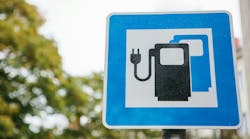The Energy Department released two new reports recently showcasing record growth across the U.S. wind market, supporting an increase in America’s share of clean, renewable energy and tens of thousands of jobs nationwide. According to these reports, the United States continues to be one of the world's largest and fastest-growing wind markets. In 2012, wind energy became the No. 1 source of new U.S. electricity generation capacity for the first time, representing 43% of all new electric additions and accounting for $25 billion in U.S. investment.
In the first four years of the Obama Administration, American electricity generation from wind and solar power more than doubled. The Administration has committed to double the renewable electricity generation from energy resources like wind power again by 2020. This growth in the overall U.S. wind industry has led directly to more American jobs throughout a number of sectors and at factories and power plants across the country. According to industry estimates, the wind sector employs more than 80,000 American workers, including workers at manufacturing facilities up and down the supply chain, as well as engineers and construction workers who build wind installations.
According to the "2012 Wind Technologies Market Report," released by the Energy Department and Lawrence Berkeley National Laboratory, last year more than 13 GW of new wind power capacity were added to the U.S. grid — nearly double the wind capacity deployed in 2011. This tremendous growth helped America's total wind power capacity surpass 60 GW at the end of 2012, representing enough capacity to power more than 15 million homes each year or as many homes as are in California and Washington state combined. The country's cumulative installed wind energy capacity has increased more than 22-fold since 2000. At the same time, the proportion of wind turbine components, such as towers, blades, and gears made in America, has increased dramatically. The report estimates 72% of the wind turbine equipment installed in the United States last year was made by domestic manufacturers, nearly tripling from 25% in 2006-07.
The report also finds that nine states now rely on wind power for more than 12% of their total annual electricity consumption, with wind power in Iowa, South Dakota, and Kansas contributing more than 20%. Additionally, Texas added more than 1,800 MW of wind power last year — more than any other state. On a cumulative basis, Texas remains a clear leader with over 12 GW installed at the end of 2012 — more than twice as much as California, the next-highest state.
Also according to the report, technical and design innovation allowing for larger wind turbines with longer, lighter blades has steadily improved wind turbine performance and has expanded wind energy production to less windy areas. Since 1998, the average capacity of wind turbines in the United States has increased by 170%. At the same time, wind project capital and maintenance costs continue to decline, lowering the cost of wind energy to near-record lows. The price of wind under long-term power purchase contracts signed in 2011 and 2012 averaged 4 cents per kWhr — making wind competitive with a range of wholesale electricity prices seen in 2012.
For the first time, the Energy Department and Pacific Northwest National Laboratory issued the "2012 Market Report on Wind Technologies in Distributed Applications," highlighting strong growth in the U.S. distributed wind energy market.
Compared to traditional, centralized power plants, distributed wind energy installations directly supply power to the local grid near homes, farms, businesses, and communities, helping to improve grid reliability and efficiency. Turbines used in these applications can range in size from a few hundred watts to multi-megawatts, and can help power remote, off-grid homes and farms as well as local schools and manufacturing facilities. Over the past ten years, the U.S. distributed wind market has grown more than five-fold.
According to this report, distributed wind in the United States reached a 10-year cumulative installed capacity of more than 812 MW at the end of 2012, representing more than 69,000 units across all 50 states. Between 2011 and 2012, U.S. distributed wind capacity grew by 175 MW, with about 80% of this growth coming from utility-scale installations. At the state level, Iowa, Massachusetts, California, and Wisconsin led the nation in new distributed wind power capacity in 2012.
For more information on the reports, including infographics, video, and an interactive map, visit the DOE website.


